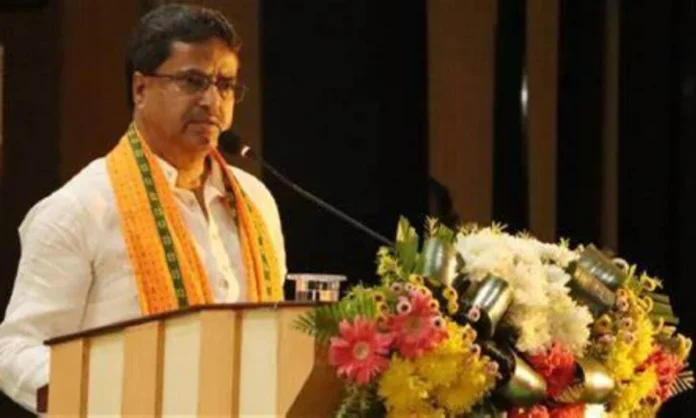Tripura Chief Minister Prof. Dr. Manik Saha has announced a Rs 67 crore tourism development project aimed at transforming Gomati district into a major eco-tourism and cultural hotspot. The initiative, funded by the Asian Development Bank (ADB), seeks to strengthen the state’s tourism infrastructure while promoting sustainable and community-based tourism in the region.
Speaking at a press briefing in Agartala, Dr. Saha said the government is committed to enhancing the tourism sector by tapping into Tripura’s natural beauty and rich heritage. He emphasised that the Gomati district, home to sites like the Chhabimura rock carvings and the Gomati river, has immense untapped tourism potential.
The project will focus on improving access to key tourist destinations, upgrading basic infrastructure, and creating modern amenities that cater to both domestic and international tourists. The government also plans to introduce eco-friendly facilities such as nature trails, visitor interpretation centres, and riverfront beautification, which will align with environmental conservation goals.
The tourism department has already begun consultations with local communities to ensure the project benefits residents through employment and entrepreneurship. The administration intends to involve self-help groups, artisans, and cultural performers, thereby creating a model for inclusive tourism.
Dr. Saha highlighted that under the ADB’s South Asia Tourism Infrastructure Development Project, this initiative will promote Tripura as a key destination in the northeastern tourism circuit. He added that the state has already received praise from international observers for its commitment to sustainable development and heritage preservation.
Tourism Minister Sushanta Chowdhury, who was also present during the announcement, said the project will cover multiple components, including road connectivity to tourist spots, signage, sanitation facilities, and solar-powered lighting. He noted that a significant part of the funds will go toward enhancing safety, building eco-resorts, and preserving local monuments.
He also revealed that training programmes will be launched for tour guides, hospitality professionals, and local entrepreneurs to improve service quality and ensure that visitors receive a memorable experience. Language support, cultural workshops, and digital promotional campaigns will be added to the strategy to attract global travellers.
Local officials in Gomati have already identified key areas where the development will begin. The first phase will concentrate on sites like Udaipur, Tepania Eco Park, and the ancient temples of Matabari. Plans are underway to digitise ticketing systems and improve signage in multiple languages for the convenience of visitors.
The state government has also submitted proposals to the Centre for linking these tourism sites with national and regional circuits. The idea is to position Tripura as a unique cultural and ecological destination in India’s northeastern corridor. Dr. Saha stressed that increased footfall will boost the local economy and open up long-term business opportunities in hospitality, transport, and handicrafts.
Residents of Gomati district have expressed optimism about the initiative, stating that the improved facilities and government backing will draw more attention to their communities and traditions. Many said the new project would reverse migration trends by creating jobs and encouraging youth to stay and work in their native region.
Tripura’s tourism department is working closely with the forest and environment departments to ensure that the project does not disrupt local biodiversity. Detailed impact assessments and sustainability audits will be conducted throughout the implementation phase to monitor environmental effects.
The Chief Minister concluded by saying that this project marks a new chapter in Tripura’s development story, driven by economic growth, cultural revival, and eco-consciousness. He assured the public that transparency and timely execution would remain key priorities as the project moves forward.
Tripura officials confirmed that the project will also introduce digital technologies to enhance the visitor experience. Plans include the development of mobile apps for tourist guidance, virtual tours of heritage sites, and real-time weather and traffic updates for easier navigation. These tools aim to modernize the way tourists interact with the state’s attractions and ensure a seamless travel experience.
In a bid to promote homestays, the tourism department will roll out financial incentives and training programs for homeowners willing to convert part of their homes into tourist accommodations. This move not only expands lodging options but also allows visitors to experience authentic local life and cuisine. Authorities believe this will significantly benefit small towns and villages along the tourism trail.
To ensure safety and accessibility, special attention is being paid to building inclusive infrastructure. This includes wheelchair ramps, gender-sensitive sanitation units, and child-friendly spaces at major tourist locations. Officials said the government aims to set a benchmark in making tourism accessible for all.
Tripura will also host cultural festivals in Gomati as part of the promotion campaign. These events will feature local dance forms, music, craft exhibitions, and food fairs that highlight the district’s unique traditions. The state hopes to create a vibrant cultural calendar that attracts tourists year-round instead of seasonal visits.
Additionally, the government is in discussions with tour operators and private investors to offer curated travel packages linked to the new infrastructure. Tourists could soon enjoy combo deals covering cultural sites, eco-parks, and local experiences, all backed by improved transport and hospitality services.

